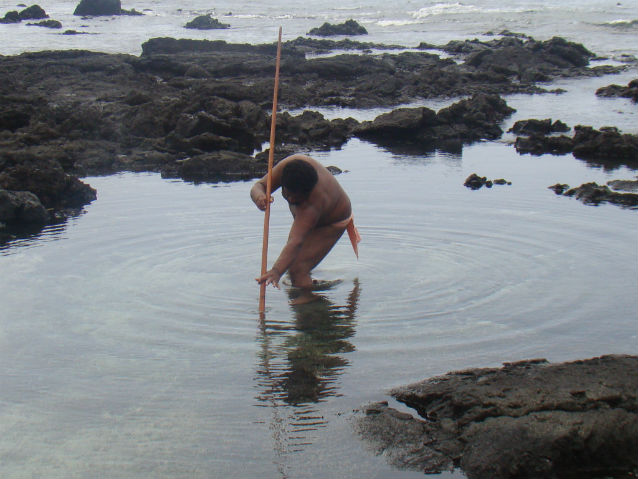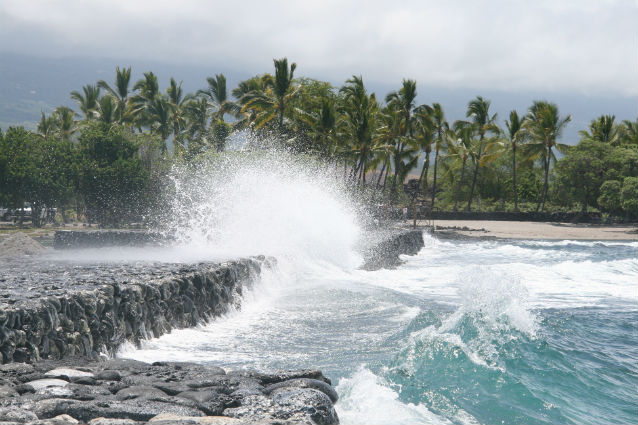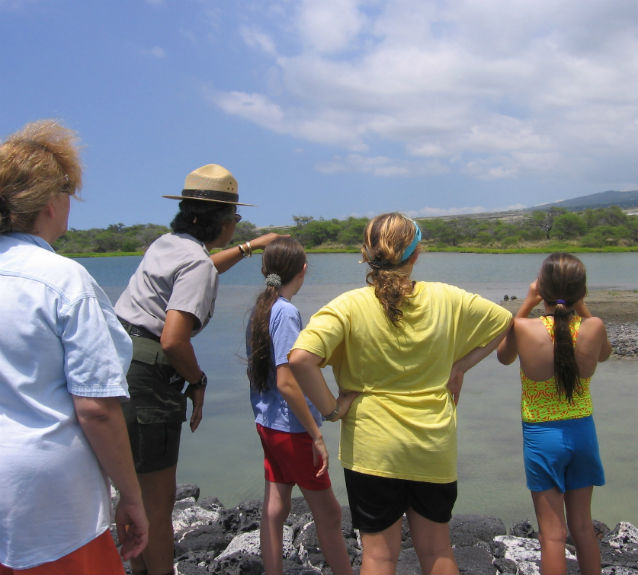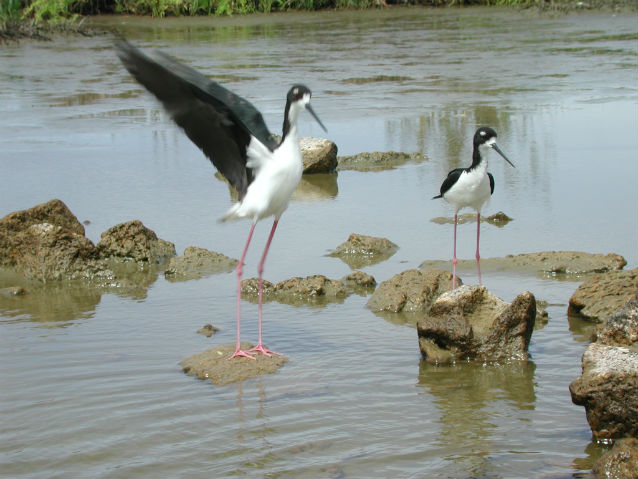Step (or hike, as the case may be) into history!

NPS Photo
Begin your adventure in Hawaiʻi, one of the most remote island chains in the world. You travelled here looking for new experiences–much like the first Polynesians, who set out from distant shores in the South Pacific and arrived in these islands. However, you probably did not sail here by ocean canoe (waʻa), travelling thousands of miles across a treacherous sea.
Now, picture yourself in ancient Hawaiʻi, on the shores of Honokohau Beach. Take a deep breath. Feel the hot, windless landscape, but don’t let it stifle your imagination as you step into the past. Can you imagine what the Hawaiians who lived here among these lava flows felt? Would it be difficult to live here? Would their thoughts be of daily survival?

NPS Photo
Many come to Kaloko-Honokōhau National Historical Park today looking for a nice beach for sunbathing and maybe a glimpse of the Hawaiian green sea turtle (honu). But once here, take the time to head through a forest of introduced mesquite (kiawe) trees and notice carvings, or petroglyphs (kiʻi pōhaku), in the stone. Follow a wooden boardwalk and observe the images. See figures in warlike poses, game boards (papamū) for Hawaiian checkers (kōnane), and flintlock muskets which mark the arrival of Europeans and their weapons of war.
The island beneath your feet is less than half a million years old; the original inhabitants (Kanaka maoli) arrived in these islands 1,200-1,500 years ago. As you hike along the 2,000 year old ‘aʻā lava flow from the visitor center, you will drop down to a 5,000 year oldpahoehoe flow. Observe the native plants, some of which are endemic (only found in Hawaiʻi).

NPS Photo
The mauka-makai trail, starting from the visitor center, is not long (.8 mile), and what awaits you at the end makes the hike worthwhile. A beautiful white sand beach, interspersed with black sand and lava rocks, is perfect for sunbathing, but many visitors may not realize it was once a home for Hawaiians. Just offshore, the ‘Āiʻopio fishtrap was built for fishing; the incoming and outgoing tides trap fish inside rock walls built across a rocky lava point.

NPS Photo
Next, take the trail north along the coastline and you will be on a section of the Ala Kahakai National Historic Trail, where soon another beach greets you after a short hike. On the mountain (mauka) side of this beach is a former fishpond, called ‘Aimakapā, now known for its wetlands and bird life. Continue your walk into Hawaii’s storied past by hiking another 30 minutes (.7 miles) to Kaloko fishpond (also accessible from the highway). This fishpond is associated with King Kamehameha I, Hawaiʻiʻs most famous chief (aliʻi), who united the Hawaiian Islands in the early 1800s.
Step (or hike as the case may be) into history! Let the park’s past inspire your present and future!
Last updated: August 15, 2019
